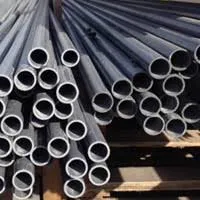
-
 Afrikaans
Afrikaans -
 Albanian
Albanian -
 Amharic
Amharic -
 Arabic
Arabic -
 Armenian
Armenian -
 Azerbaijani
Azerbaijani -
 Basque
Basque -
 Belarusian
Belarusian -
 Bengali
Bengali -
 Bosnian
Bosnian -
 Bulgarian
Bulgarian -
 Catalan
Catalan -
 Cebuano
Cebuano -
 China
China -
 China (Taiwan)
China (Taiwan) -
 Corsican
Corsican -
 Croatian
Croatian -
 Czech
Czech -
 Danish
Danish -
 Dutch
Dutch -
 English
English -
 Esperanto
Esperanto -
 Estonian
Estonian -
 Finnish
Finnish -
 French
French -
 Frisian
Frisian -
 Galician
Galician -
 Georgian
Georgian -
 German
German -
 Greek
Greek -
 Gujarati
Gujarati -
 Haitian Creole
Haitian Creole -
 hausa
hausa -
 hawaiian
hawaiian -
 Hebrew
Hebrew -
 Hindi
Hindi -
 Miao
Miao -
 Hungarian
Hungarian -
 Icelandic
Icelandic -
 igbo
igbo -
 Indonesian
Indonesian -
 irish
irish -
 Italian
Italian -
 Japanese
Japanese -
 Javanese
Javanese -
 Kannada
Kannada -
 kazakh
kazakh -
 Khmer
Khmer -
 Rwandese
Rwandese -
 Korean
Korean -
 Kurdish
Kurdish -
 Kyrgyz
Kyrgyz -
 Lao
Lao -
 Latin
Latin -
 Latvian
Latvian -
 Lithuanian
Lithuanian -
 Luxembourgish
Luxembourgish -
 Macedonian
Macedonian -
 Malgashi
Malgashi -
 Malay
Malay -
 Malayalam
Malayalam -
 Maltese
Maltese -
 Maori
Maori -
 Marathi
Marathi -
 Mongolian
Mongolian -
 Myanmar
Myanmar -
 Nepali
Nepali -
 Norwegian
Norwegian -
 Norwegian
Norwegian -
 Occitan
Occitan -
 Pashto
Pashto -
 Persian
Persian -
 Polish
Polish -
 Portuguese
Portuguese -
 Punjabi
Punjabi -
 Romanian
Romanian -
 Russian
Russian -
 Samoan
Samoan -
 Scottish Gaelic
Scottish Gaelic -
 Serbian
Serbian -
 Sesotho
Sesotho -
 Shona
Shona -
 Sindhi
Sindhi -
 Sinhala
Sinhala -
 Slovak
Slovak -
 Slovenian
Slovenian -
 Somali
Somali -
 Spanish
Spanish -
 Sundanese
Sundanese -
 Swahili
Swahili -
 Swedish
Swedish -
 Tagalog
Tagalog -
 Tajik
Tajik -
 Tamil
Tamil -
 Tatar
Tatar -
 Telugu
Telugu -
 Thai
Thai -
 Turkish
Turkish -
 Turkmen
Turkmen -
 Ukrainian
Ukrainian -
 Urdu
Urdu -
 Uighur
Uighur -
 Uzbek
Uzbek -
 Vietnamese
Vietnamese -
 Welsh
Welsh -
 Bantu
Bantu -
 Yiddish
Yiddish -
 Yoruba
Yoruba -
 Zulu
Zulu
Discover the Future of Automotive Innovation with Fiberglass Cars
The Rise of Fiberglass Cars Innovation and Durability in Automotive Design
The automotive industry has witnessed countless innovations over the decades, but few materials have caused as much of a stir as fiberglass. Introduced in the mid-20th century, fiberglass quickly became a game-changer in car manufacturing. Its unique properties not only allowed for innovative designs but also ushered in a new era of durability and performance in automobiles.
Fiberglass is a composite material made of glass fibers and resin. It is lightweight yet remarkably strong, making it an ideal choice for car manufacturers looking to reduce weight without sacrificing structural integrity. One of the first mass-produced cars made with fiberglass was the 1953 Corvette, which showcased the material's potential. The Corvette captured the imagination of car enthusiasts worldwide and set the stage for the adoption of fiberglass in the automotive sector.
The benefits of fiberglass over traditional materials such as steel and aluminum are manifold. Firstly, fiberglass possesses excellent resistance to corrosion, which is crucial for vehicles exposed to harsh weather conditions and road salt. This durability translates to a longer lifespan for vehicles, making them more appealing to consumers. Additionally, fiberglass can be molded into complex shapes, allowing for more aerodynamic designs that enhance vehicle performance and fuel efficiency.
Another significant advantage of fiberglass is its cost-effectiveness. The manufacturing process of fiberglass requires less energy compared to that of metals, and its lightweight nature contributes to lower fuel consumption over the vehicle's lifespan. This eco-friendly aspect is increasingly attractive in today's market, where sustainability is a growing concern among consumers.
fiberglass car

The versatility of fiberglass extends beyond conventional automobiles. It has been utilized in a variety of applications, including sports cars, buggies, and even concept vehicles. Companies like Lotus and BMW have used fiberglass extensively to create lightweight structures that maximize speed and handling. The use of fiberglass in racing cars is particularly significant, as every ounce saved can translate to improved performance on the track.
Despite its myriad benefits, fiberglass has not been without criticism. Some argue that it is less repairable than traditional materials, as damage can require specialized skills to restore effectively. However, advancements in repair technology and techniques have mitigated many of these concerns, making fiberglass cars increasingly viable options for the average consumer.
As the automotive industry continues to evolve, the trend toward lighter, more efficient vehicles shows no signs of slowing. Electric vehicles (EVs) are gaining prominence, and the lightweight properties of fiberglass make it an appealing option for future designs. Manufacturers are exploring new composite materials that combine fiberglass with other materials to enhance performance, safety, and aesthetic appeal.
In conclusion, fiberglass has earned its place in the annals of automotive history as a material that transformed car manufacturing. Its unique combination of lightweight strength, durability, and design flexibility makes it an ideal choice for modern vehicles. As we look to the future, the continued innovation and application of fiberglass in automotive design promises to play a significant role in the quest for more efficient, sustainable, and high-performance vehicles. The legacy of fiberglass cars is not merely a reflection of the past, but a beacon of what lies ahead in automotive technology.
Latest news
-
Exploring the Benefits of Top Hammer Drifter Rods for Enhanced Drilling PerformanceNewsJun.10,2025
-
High-Precision Fiberglass Winding Machine for GRP/FRP Pipe Production – Reliable & Efficient SolutionsNewsJun.10,2025
-
FRP Pipes & Fittings for Shipbuilding - Corrosion-Resistant & LightweightNewsJun.09,2025
-
Premium FRP Flooring Solutions Durable & Slip-ResistantNewsJun.09,2025
-
Premium Fiberglass Rectangular Tanks Durable & Lightweight SolutionNewsJun.09,2025
-
Tapered Drill String Design Guide Durable Performance & UsesNewsJun.09,2025









